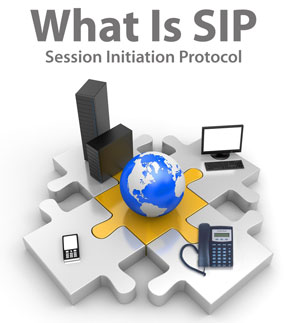
Ultimately, this example is quite similar to the ways in which hotel telephony has been transformed through the emergence of Voice over Internet Protocol (VoIP) and Session Initiation Protocol (SIP) trunking.
What is a SIP Trunk, Anyway?
A SIP trunk is a cost-saving technology with three distinct properties:
- A Virtual Connection – Traditionally, hotel phone systems have relied on T1 lines, or bundled phone line “trunks”. SIP trunking relies on the Internet for a virtual phone line connection.
- Use of Session Initiation Protocol – SIP is basically just a clever digital standard that can be used for the creation, modification, and termination of calls.
- Transmits Both Voice and Video Data – Voice and video can be very useful in hotel phone systems, both for business functionality and guest satisfaction.
The real beauty of SIP trunks is that they are able to both transmit and manage calls, simultaneously, via an Internet Telephony Service Provider (ITSP); in other words, over the cloud. This enables SIP trunk networks to outperform less efficient communications setups, and save your hotel money.
How Can SIP Trunking Yield Cost Savings?
Essentially, there are five things that make SIP trunking very affordable:
- The Infrastructure for SIP Trunks are Less Expensive. This is because SIP trunking removes any need for Primary Rate Interfaces (PRIs). In plain English, PRIs act as transmission lines, like T1 lines, which are used to handle phone calls. When you cut out the need for PRIs, hotels can take advantage of significant infrastructure and scalability savings.
- Reduced Long Distance Rates – Due to the fact that SIP trunks make use of the Internet to transmit digital data, long distance rates can be reduced to well below 2¢ per minute. This helps your hotel to save money for itself, while cutting down on customer costs, as well.
- Free Local Calling – Since SIP trunks make use of a Wide Area Network (WAN) for transmitting local calls, they essentially become free. In other words, SIP trunking allows your hotel to get around the use of a traditional phone company for local calls, because they are routed across the Internet.
- Incremental Purchasing Options – Should your hotel have the need to grow or expand its communications capabilities, it should not cost you an arm and a leg. SIP trunks can be purchased incrementally – one at a time. PRIs, on the other hand, often must be bought in channel increments of 23.
- Reduced Phone Lines – Traditionally, one phone line was needed for every extension within your facility. If your front desk had multiple extensions, for instance, you were required to pay for each line, individually. With SIP trunking, you only need to maintain a single phone line for every simultaneous phone call, which can result in big savings.
The Advantages of SIP are Clear
Not only do SIP trunks allow for significant savings, they also have more to offer to users. Because they are already package-switched and managed via the cloud, SIP trunks work beautifully for video calls – a major attraction to business guests. They also allow for technologically advanced communications, user-friendly calling, and total scalability. It’s a win all around.
There’s no need to pay for dated services that you don’t need. Making the switch to SIP trunking will help you start saving – fast.